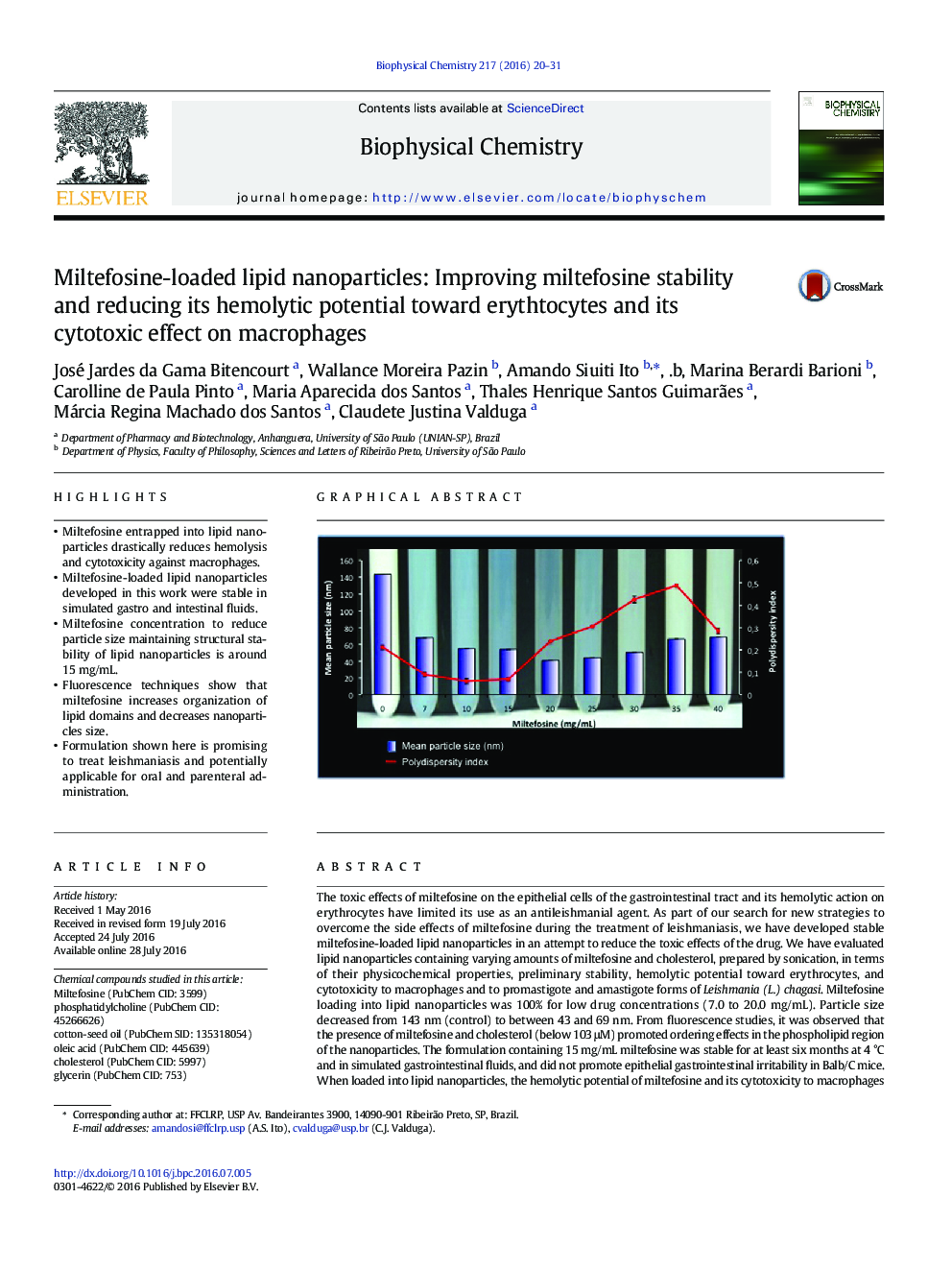| Article ID | Journal | Published Year | Pages | File Type |
|---|---|---|---|---|
| 5370723 | Biophysical Chemistry | 2016 | 12 Pages |
â¢Miltefosine entrapped into lipid nanoparticles drastically reduces hemolysis and cytotoxicity against macrophages.â¢Miltefosine-loaded lipid nanoparticles developed in this work were stable in simulated gastro and intestinal fluids.â¢Miltefosine concentration to reduce particle size maintaining structural stability of lipid nanoparticles is around 15 mg/mL.â¢Fluorescence techniques show that miltefosine increases organization of lipid domains and decreases nanoparticles size.â¢Formulation shown here is promising to treat leishmaniasis and potentially applicable for oral and parenteral administration.
The toxic effects of miltefosine on the epithelial cells of the gastrointestinal tract and its hemolytic action on erythrocytes have limited its use as an antileishmanial agent. As part of our search for new strategies to overcome the side effects of miltefosine during the treatment of leishmaniasis, we have developed stable miltefosine-loaded lipid nanoparticles in an attempt to reduce the toxic effects of the drug. We have evaluated lipid nanoparticles containing varying amounts of miltefosine and cholesterol, prepared by sonication, in terms of their physicochemical properties, preliminary stability, hemolytic potential toward erythrocytes, and cytotoxicity to macrophages and to promastigote and amastigote forms of Leishmania (L.) chagasi. Miltefosine loading into lipid nanoparticles was 100% for low drug concentrations (7.0 to 20.0 mg/mL). Particle size decreased from 143 nm (control) to between 43 and 69 nm. From fluorescence studies, it was observed that the presence of miltefosine and cholesterol (below 103 μM) promoted ordering effects in the phospholipid region of the nanoparticles. The formulation containing 15 mg/mL miltefosine was stable for at least six months at 4 °C and in simulated gastrointestinal fluids, and did not promote epithelial gastrointestinal irritability in Balb/C mice. When loaded into lipid nanoparticles, the hemolytic potential of miltefosine and its cytotoxicity to macrophages diminished, while its antiparasitic activity remained unaltered. The results suggested that miltefosine-loaded lipid nanoparticles may be promising for the treatment of leishmaniasis and might be suitable for oral and parenteral use.
Graphical abstractDownload full-size image
